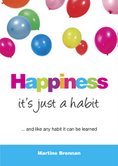 |
| Wikipedia: A character from a Gilbert & Sullivan operetta addressing an ancestor |
The more I work with genealogy, the more my study of
spiritual and quantum physics lead me to believe we carry the experiences of
our ancestors in our DNA and that, hopefully, we are able to clear the
imbalances from the past and take advantage of our ancestors’ hard-earned
strengths. The Native Americans honored their ancestors everyday and used
a form of psychotherapy as a tool to achieve clear mind. Every
nationality has its time of great troubles and pain, which gives its people a
common thread of understanding. What follows is an essay from Martine
Brennan, a County Kerry-based psychotherapist, discussing her program Find Your Family, Find Your Self from this perspective.
-- Alannah Ryane, Family History Producer
 |
| Courtesy of All About Forensic Science |
Families can be wonderful, and families can be terrible.
When they are terrible, we run from them to other lives in other countries. We
stay in them and suffer silently and aloud. We search for the lost ones, those
shunned by the family, or the desperate ones who shun the
family. But whatever we do with our families we have to deal with
them.
Every family leaves a legacy. Sometimes the legacy
crowds out everything. We know that we are drowning, and we look around for a
life raft. That's what coaching is, a life raft to take us where we want to go.
With a life-raft, we can find freedom from the shadows of the past, we can make
peace with the past, no matter what it contains. We have to steer that raft
ourselves. But the relief is enormous, when we find some one who has already
been through the rapids and come out the other side.
Lots of people live without this peace and freedom
because they do not believe experiencing it is possible. They have given up on
their families, but, more importantly, they have given up on themselves. This
is tragic. And this is why I set up “Find Your Family, Find Your Self.”
Every life is precious. Each person's pain matters. Pain
is a natural and healthy response to trauma. Endless suffering is not.
Suffering can end. We can go through painful experiences and find peace and
freedom on the other side. Some family members know this, others need a little
help along the way.
It is my honor and privilege to help people find freedom
and peace in relation to their families of origin. It seems that everything in
my life has brought me to this place, from my first excursions into genealogy
with my maternal grandmother to today. When I left University College Cork in
the ‘80s, I followed in my mother's emigrant footsteps to London. I learned
about the gifts of my Irish identity, even as I negotiated the shadows.
In those London years, in the course of my training as a counselor and
psychotherapist, I found my self, my own identity. I learned how to be me.
There is nothing sweeter than this.
For over 20 years, I had a wonderful Irish-American
friend. Her wisdom was a treasure to me. Before she died, I asked her “How can
I ever repay you for all you have given me?” She simply said “You can't ... but
what you can do is pass it on.” So that's what I do every day now, I pass on
the peace and freedom to others. WG
Please check out our Genealogy Youtube Channel for an episode of RTE's Mrs Brown's Boys called Mrs Brown's Family Therapy Session. The show just won the IFTA (Irish Film & Television Awards) for Best Entertainment on TV.
Please check out our Genealogy Youtube Channel for an episode of RTE's Mrs Brown's Boys called Mrs Brown's Family Therapy Session. The show just won the IFTA (Irish Film & Television Awards) for Best Entertainment on TV.
 |
| Martine Brennan |
Martine Brennan is a London-born Irishwoman who now lives
in Tralee, County Kerry, only a few miles from where her grandmother and grandfather grew up.
Her lifelong interest in family and family history led to a bachelor’s degree
in history and sociology at University College Cork, Ireland, and a
professional qualification in Counseling and Psychotherapy as a postgraduate in
London. She has more than 20 years experience helping individuals and
groups overcome family-of- origin and identity issues. She particularly
relishes her focus on people with Irish roots, assisting them find freedom from
the shadows of the past and empowered to make liberating choices.
Brennan has written for the magazine Changing Ireland and has been featured on RTE, Radio Kerry, Dublin FM, Castlebar Community Radio and Blogtalk Radio. She is also the author of "Happiness ... It's Just a Habit" and "From Out of the Darkness.” You can follow her on Twitter @Irishgencoach. For more information, visit Brennan’s blog, 'My Small Granny and Other Stories.'






